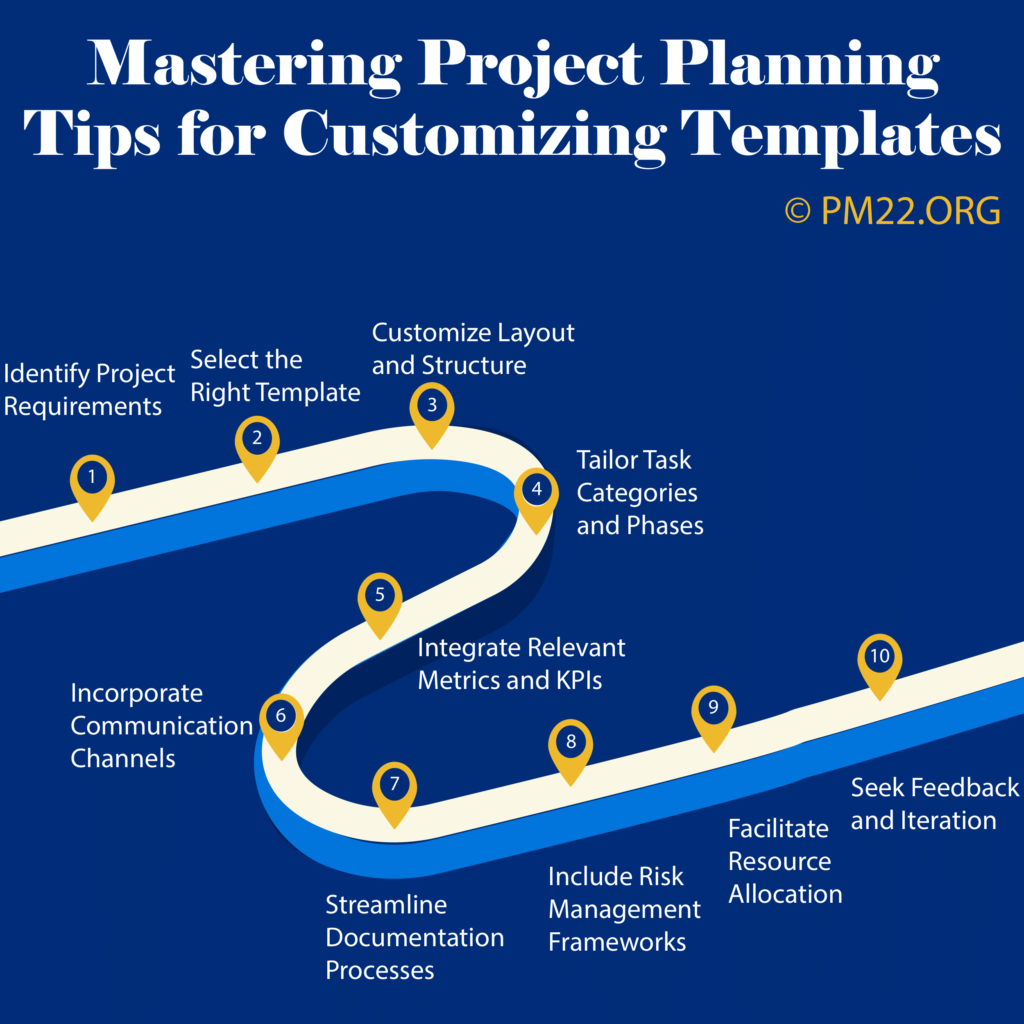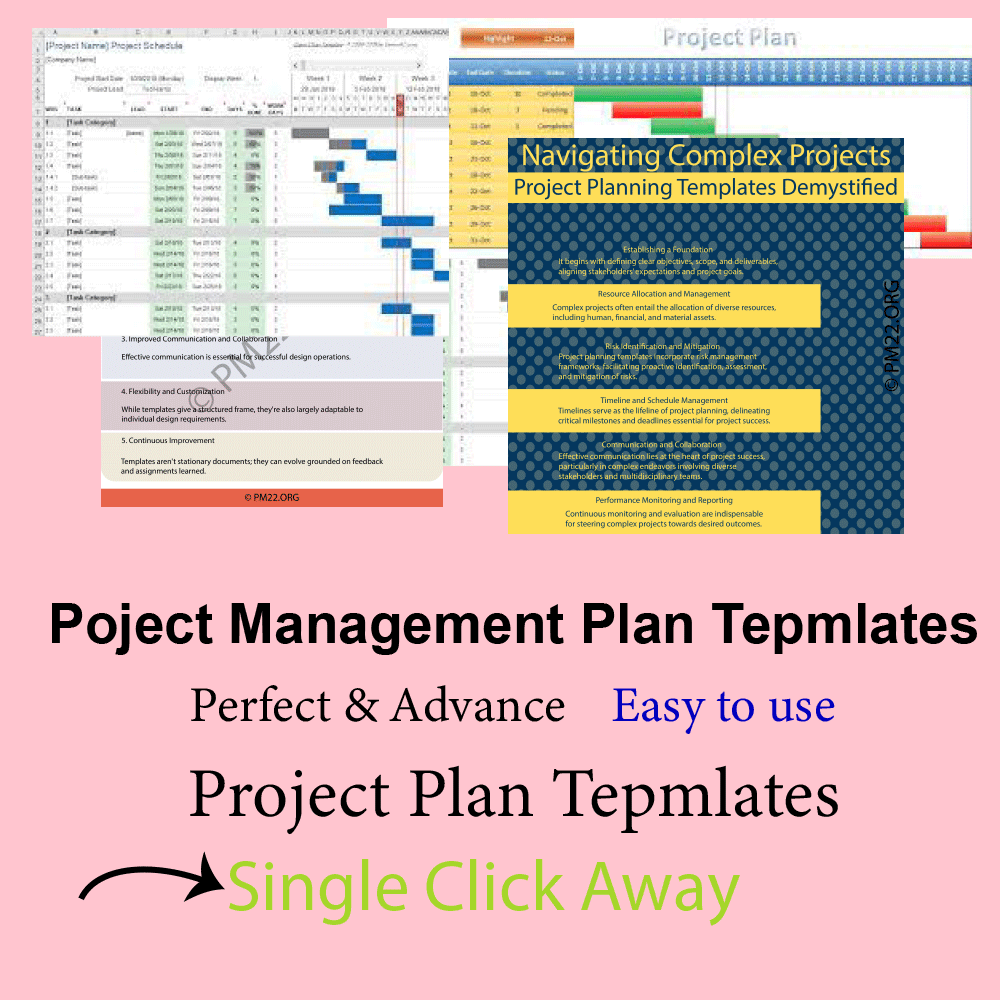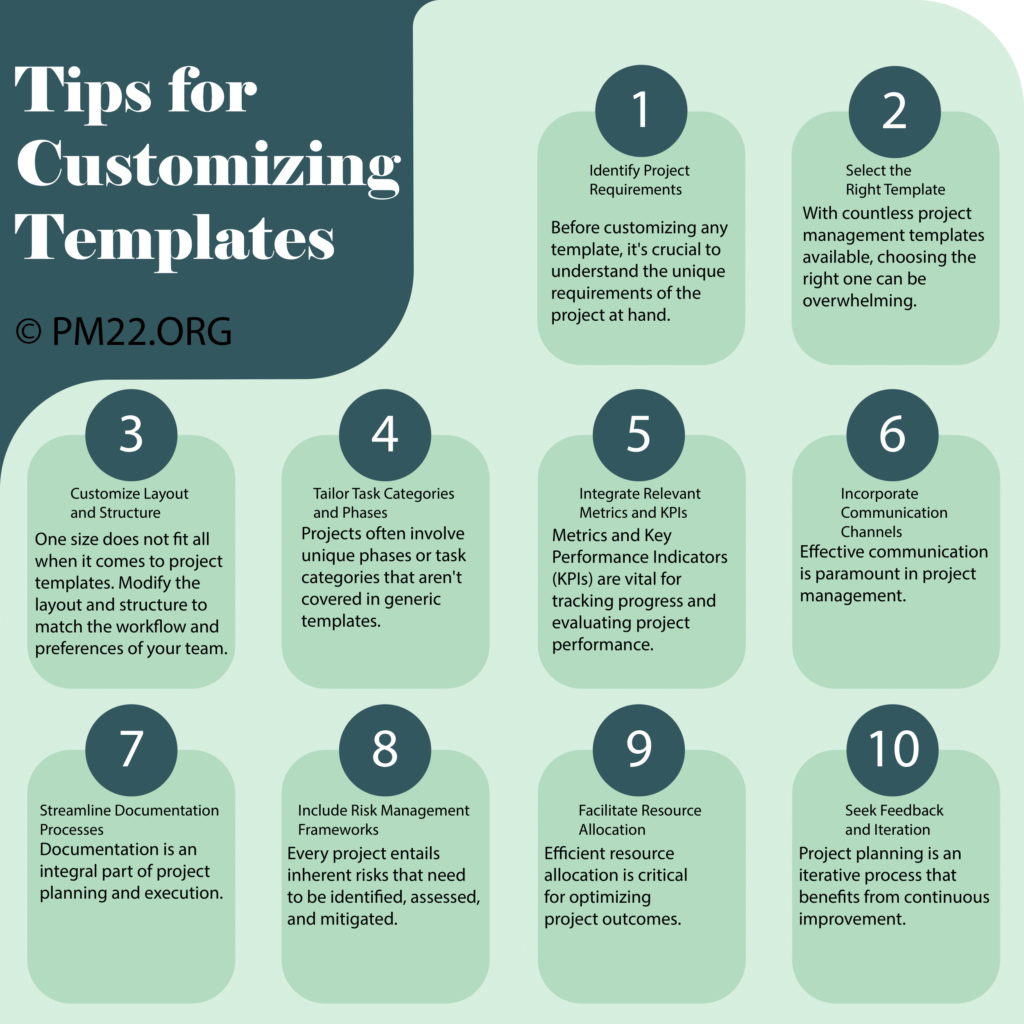 In the realm of project management, efficient planning is the cornerstone of success. A well-structured plan not only serves as a roadmap but also ensures that projects stay on track, within budget, and meet their objectives. Utilizing templates can streamline this process significantly, offering a framework that saves time and enhances productivity. However, to truly master project planning, it’s essential to customize templates to suit the specific needs of each project. Here are some valuable tips for tailoring templates to maximize their effectiveness.
In the realm of project management, efficient planning is the cornerstone of success. A well-structured plan not only serves as a roadmap but also ensures that projects stay on track, within budget, and meet their objectives. Utilizing templates can streamline this process significantly, offering a framework that saves time and enhances productivity. However, to truly master project planning, it’s essential to customize templates to suit the specific needs of each project. Here are some valuable tips for tailoring templates to maximize their effectiveness.
- Identify Project Requirements: Before customizing any template, it’s crucial to understand the unique requirements of the project at hand. This includes defining project goals, scope, stakeholders, timelines, and resources. By clearly outlining these aspects, you can determine which sections of the template are essential and which can be modified or omitted.
CLICK HERE TO DOWNLOAD 300+ PROJECT MANAGEMENT TEMPLATES & DOCUMENTS IN EXCEL
- Select the Right Template: With countless project management templates available, choosing the right one can be overwhelming. Assess different templates based on their compatibility with your project type, size, and complexity. Whether it’s a Gantt chart, Kanban board, or a simple task list, opt for a template that aligns closely with your project’s needs.
- Customize Layout and Structure: One size does not fit all when it comes to project templates. Modify the layout and structure to match the workflow and preferences of your team. This might involve rearranging sections, adding new fields, or simplifying complex layouts to enhance clarity and usability.

- Tailor Task Categories and Phases: Projects often involve unique phases or task categories that aren’t covered in generic templates. Customize task lists and categories to reflect the specific stages of your project lifecycle. Whether it’s initiation, planning, execution, monitoring, or closure, ensure that the template accurately mirrors your project’s progression.
- Integrate Relevant Metrics and KPIs: Metrics and Key Performance Indicators (KPIs) are vital for tracking progress and evaluating project performance. Embed relevant metrics directly into the template to facilitate real-time monitoring and decision-making. Whether it’s budgetary figures, resource allocation, or milestone achievements, incorporating these metrics enhances the template’s utility.

- Incorporate Communication Channels: Effective communication is paramount in project management. Integrate communication channels such as email threads, meeting schedules, or collaborative platforms directly into the template. This ensures seamless coordination among team members and stakeholders, fostering transparency and accountability.
- Streamline Documentation Processes: Documentation is an integral part of project planning and execution. Customize templates to streamline documentation processes by incorporating standardized formats for reports, status updates, and deliverables. This not only saves time but also ensures consistency across different project phases.

- Include Risk Management Frameworks: Every project entails inherent risks that need to be identified, assessed, and mitigated. Customize templates to include risk management frameworks, such as risk registers, probability assessments, and mitigation strategies. By proactively addressing risks within the planning phase, you can minimize potential disruptions and setbacks.
- Facilitate Resource Allocation: Efficient resource allocation is critical for optimizing project outcomes. Customize templates to include resource management features such as resource calendars, allocation matrices, and workload distribution charts. This enables better resource planning and utilization, preventing bottlenecks and overburdening team members.
CLICK HERE TO DOWNLOAD 300+ PROJECT MANAGEMENT TEMPLATES & DOCUMENTS IN EXCEL
- Seek Feedback and Iteration: Project planning is an iterative process that benefits from continuous improvement. Encourage team members to provide feedback on the customized templates, identifying areas for enhancement or refinement. By fostering a culture of feedback and iteration, you can create templates that evolve and adapt to meet the dynamic needs of your projects.
In conclusion, mastering project planning involves more than just using generic templates—it’s about customizing them to fit the unique requirements of each project. By following these tips and tailoring templates to align with project specifics, teams can streamline planning processes, enhance collaboration, and ultimately, achieve project success. Customized templates serve as invaluable tools that empower project managers and teams to navigate complexities with clarity and confidence.
